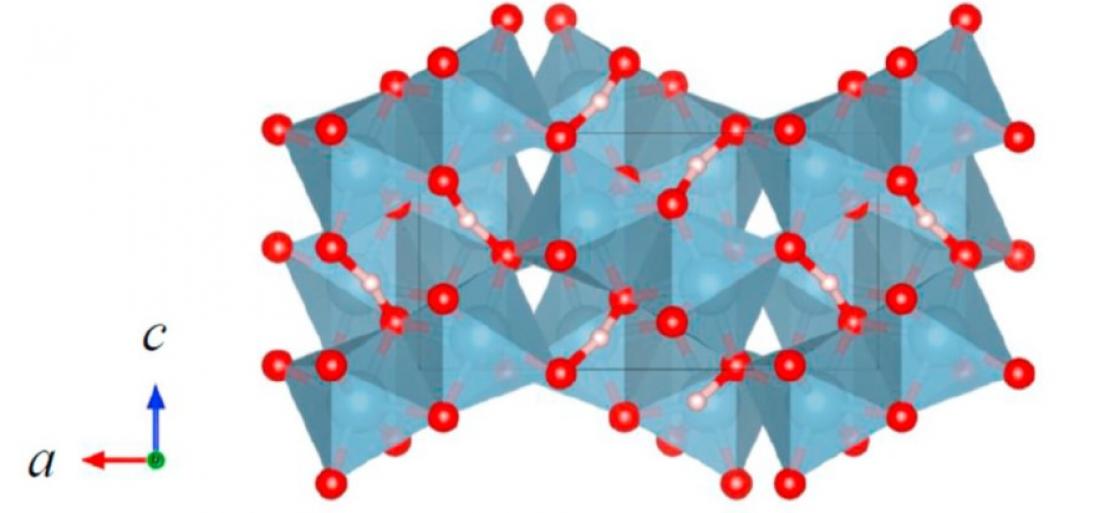The crystal structure of ε-AlOOH
Hydrogen is the most abundant element in the universe and it plays important roles in the structure, dynamics, and evolution of the planets. Hydrogen is transported into deep mantle regions as a hydrous mineral via the subduction of oceanic plates. To better understand the global hydrogen circulation in the Earth’s mantle, a number of high-pressure experiments were conducted on the stability of hydrous phases under lower mantle conditions. Recent discoveries of new high-pressure hydrous minerals have extended the stability field of hydrous phases toward wider pressure, temperature and compositional ranges, suggesting the existence and the important roles of water in the deepest region of the Earth’s mantle. However, there have been few studies on hydrous minerals in the multicomponent system relevant to the actual subducting slabs under the pressure and temperature conditions of the lower parts of the Earth’s mantle and of those in other planetary interiors.
We conducted in-situ X-ray diffraction experiments on major hydrous phases in the Earth’s lower mantle, CaCl2-type d-AlOOH, and its solid solutions with FeOOH and MgSiO4H2 at pressures up to ~270 GPa, far higher than those of the Earth’s mantle. High pressure–temperature (P–T) conditions were achieved by techniques using a multianvil (MA) apparatus and a laser-heated diamond anvil cell (DAC) in a wide range of pressures of up to 270 GPa and temperatures of up to 2,500 K (Table S1).
Above 190 GPa at 2500 K, we observed that d-AlOOH transitioned to a new phase, named e-AlOOH. We also found that hydroxides formed solid solutions over a wide composition range in the AlOOH–FeOOH–MgSiO4H2 system, which accommodates the major elements in terrestrial rocks. Thus water couldbe stored in these hydroxides in the deep interiors of the Earth, terrestrial super-Earths, and the rocky cores of some icy planets, irrespective of their composition models.
Reference URL:
https://agupubs.onlinelibrary.wiley.com/doi/full/10.1029/2019JB018146
https://www.sciencedirect.com/science/article/pii/S0019103518306274



